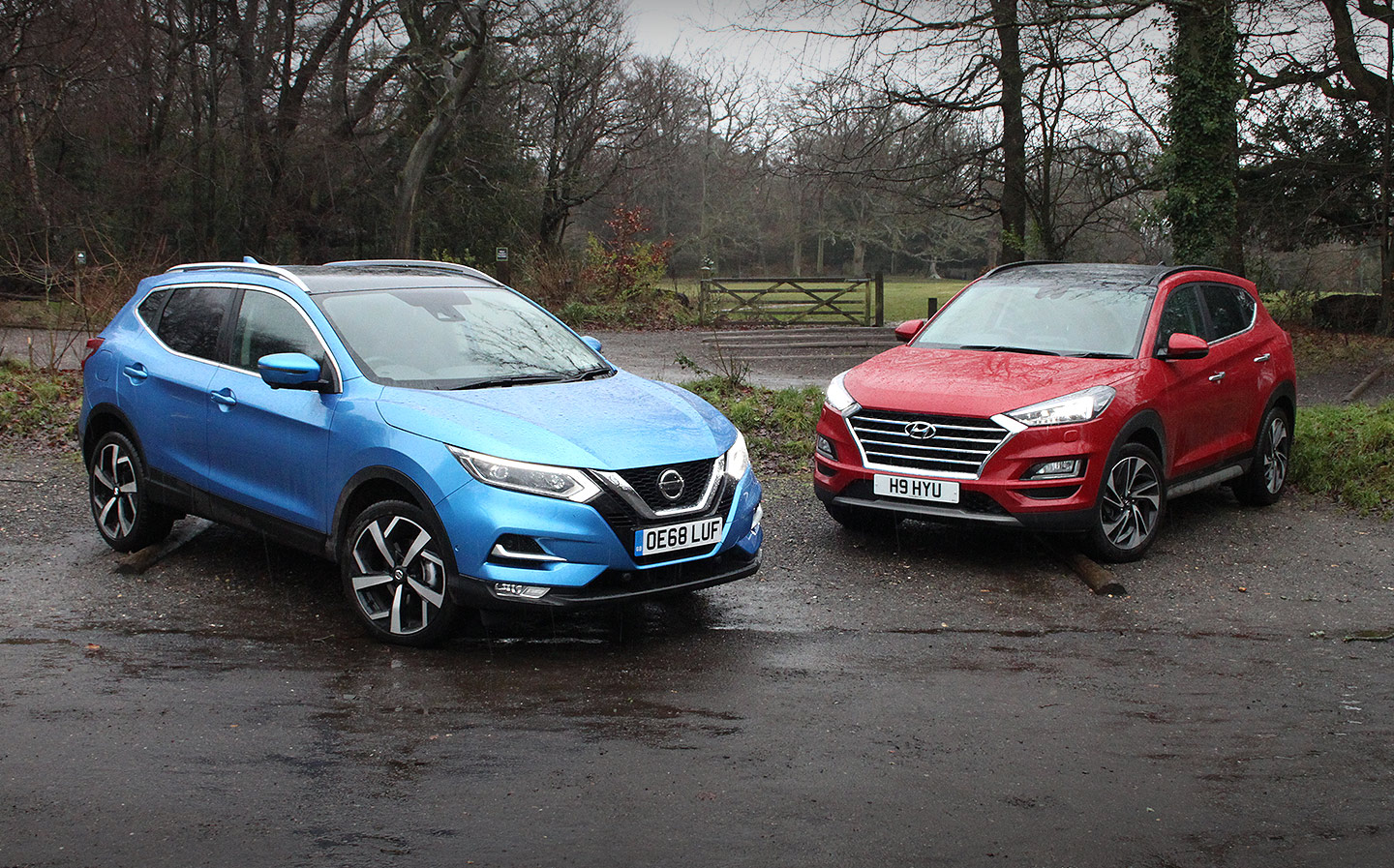Twin test: Nissan Qashqai vs Hyundai Tucson
Is Qashqai still king of the crossovers?
IF YOU think the roads are awash with mid-size crossovers, blame the Nissan Qashqai. More than three million of the jacked-up hatchback have rolled off the production line in Sunderland since Qashqai’s launch in 2007, with it quickly establishing itself as the UK and Europe’s favourite car of this type.
In the early days, there weren’t many contenders – the Toyota RAV4 and Honda CR-V had been on the scene for 10 years or so – but the Qashqai became the real runaway success story, helping explode the crossover segment (SUVs based on more traditional car platforms). These days, almost every car maker has a crossover on sale to fill every possible niche.
So what’s the appeal? Raised height is the major selling point, which not only helps in stepping over speed bumps, potholes and off-road hurdles but also makes for a more commanding view of the road.
The Qashqai’s particular and continued success is harder to explain. Not that’s it’s a bad car – far from it, as you’ll see below – but with so much excellent competition these days, why is it still the UK’s best-selling crossover? Is it the Made in Britain factor? The keen pricing, perhaps? Or maybe its practicality, safety, fuel efficiency or comfort?
To find out, we pitted a highly-specced Qashqai against a similarly feature-packed rival, the Hyundai Tucson. Both were petrol-powered, because these days diesel cars are about as welcome outside the school gates as a cigarette stand.
So, Qashqai or Tucson: which would you buy? Read on for our thoughts.
2018 Nissan Qashqai
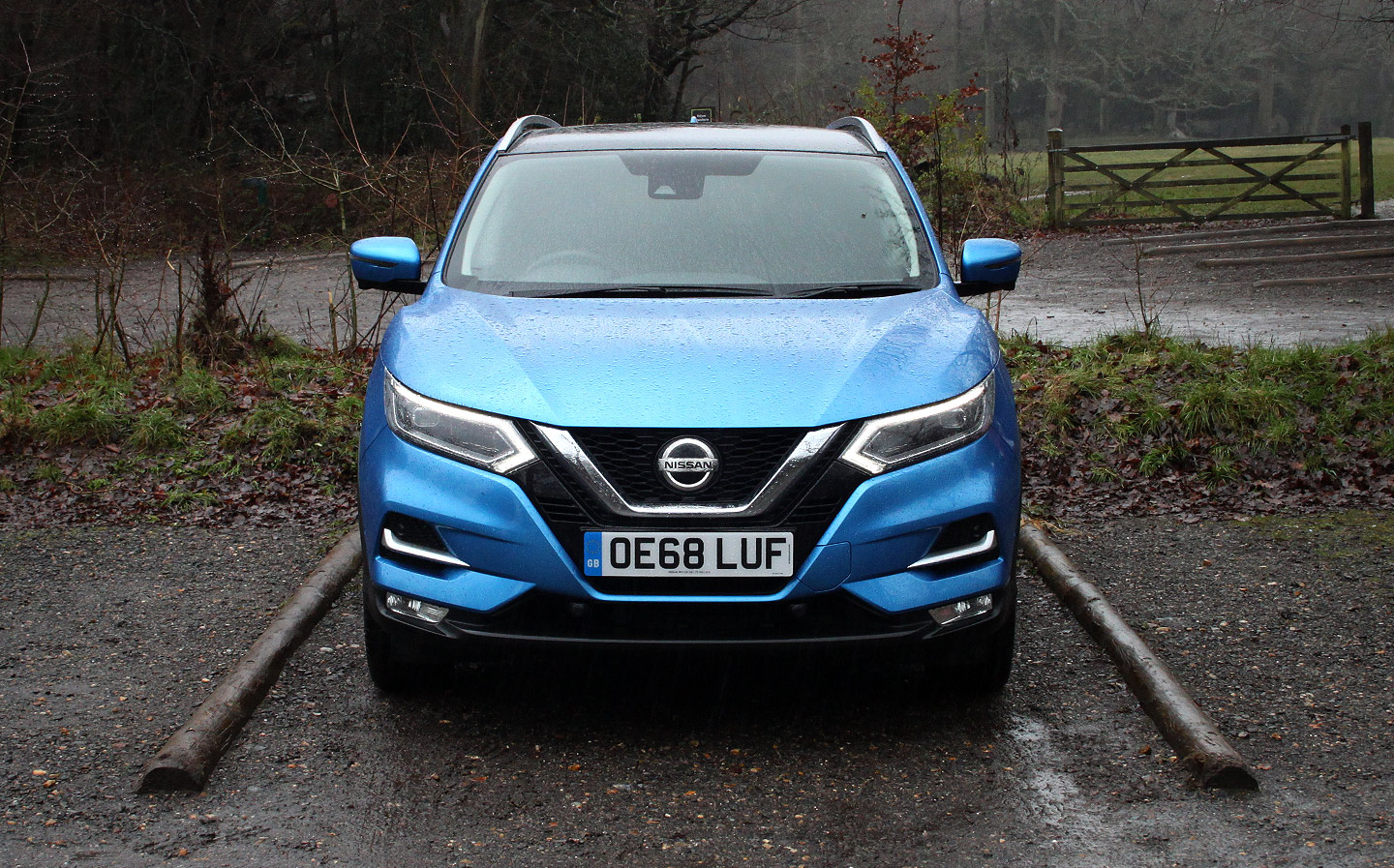
Words: James Allen
Even though the Qashqai is one of the oldest cars in its class (this version, albeit facelifted in 2017, first went on sale in February 2014), the five-seater SUV is still one of the UK’s best-selling new cars – last year Nissan shifted 50,546 of them, making it the fourth most popular car overall. It even outsold the Ford Focus (just).
After spending a week with the Qashqai in near top-spec Tekna trim, I can see the appeal.
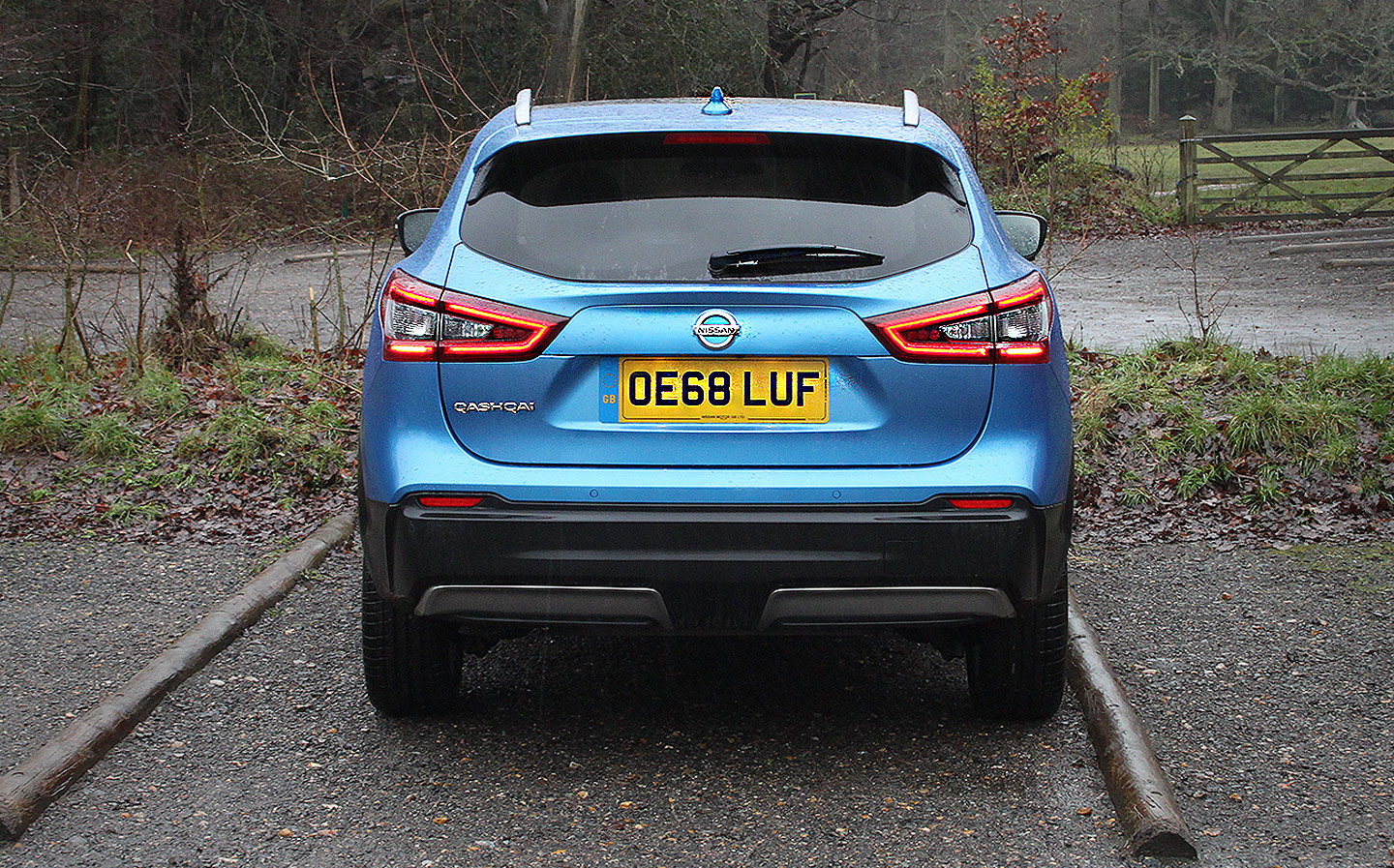
The Qashqai’s cabin is a pleasant place in which to spend time, and while the interior does feature some cheap-feeling plastics, they’re mainly relegated to out-of-sight areas such as around the door sills.
Most of the materials you’ll see or touch when driving are either pleasant faux leather or soft-touch plastic. We also liked the material inserts in the seat squabs and backrests, which help keep you in place through the turns and improve breathability.
The Qashqai’s cabin isn’t faultless, mind you. Personally, I’d have liked the Nissan to be a little less monochrome inside (not that the Tucson is the bastion of bright and colourful interior design), and having the touchscreen and many of the centre console controls well below the driver’s line of sight can be quite a pain when you haven’t yet figured out what all the buttons do.
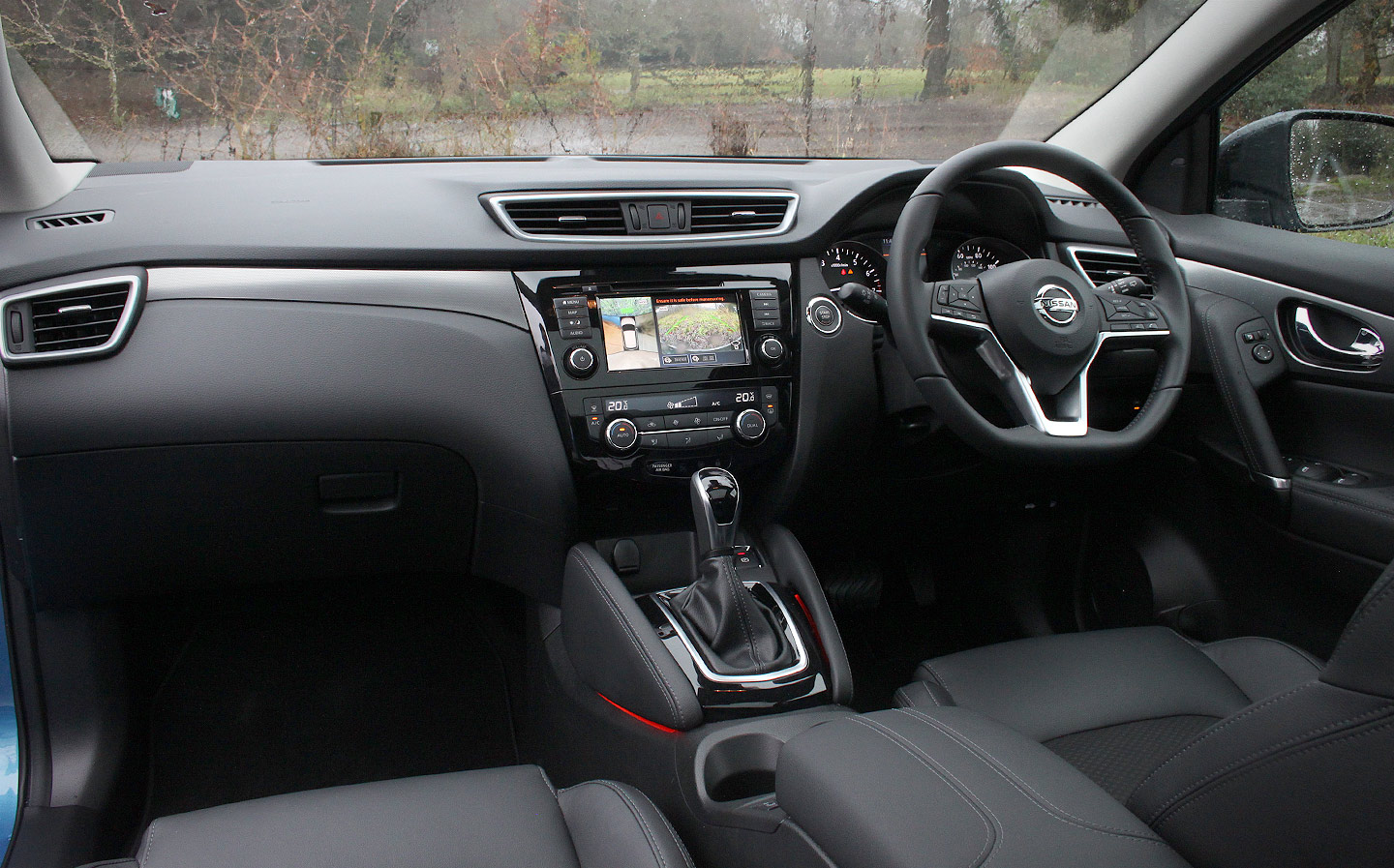
And while the new NissanConnect touchscreen (introduced at the end of last year) still lags behind much of the competition in terms of design, it is at least responsive and straightforward-to-navigate, and comes with TomTom navigation and over-the-air updates. Like the Tucson, it will also run Android Auto or Apple CarPlay, and the Bose stereo on our test car was a level above that of the Tucson, in my opinion, with a clear and bassy sound.
While the Qashqai isn’t the roomiest car in this class (at 401 litres, its boot is quite a bit smaller than the Tucson’s class-leading 513 litres), the load area is still a decent size, with the wide opening and shallow boot lip making it easy to slide more cumbersome gear in and out, and the flat floor section can be removed or used as dividers, to stop shopping rolling around.
The rest of the cabin’s pretty accommodating too. Though our car’s door pockets were limited somewhat, due to the large Bose speakers, Qashqai claws back ground on the practicality front by offering a good amount of space for occupants: the panoramic sunroof fitted to the test car adds thickness to the roof lining, but even so, six-footers in the front and back can sit comfortably without their heads brushing the top. Even taller folk in the rear seats should also have good amounts of leg and knee room – assuming there aren’t especially lofty people in the driver’s and front passenger seat.
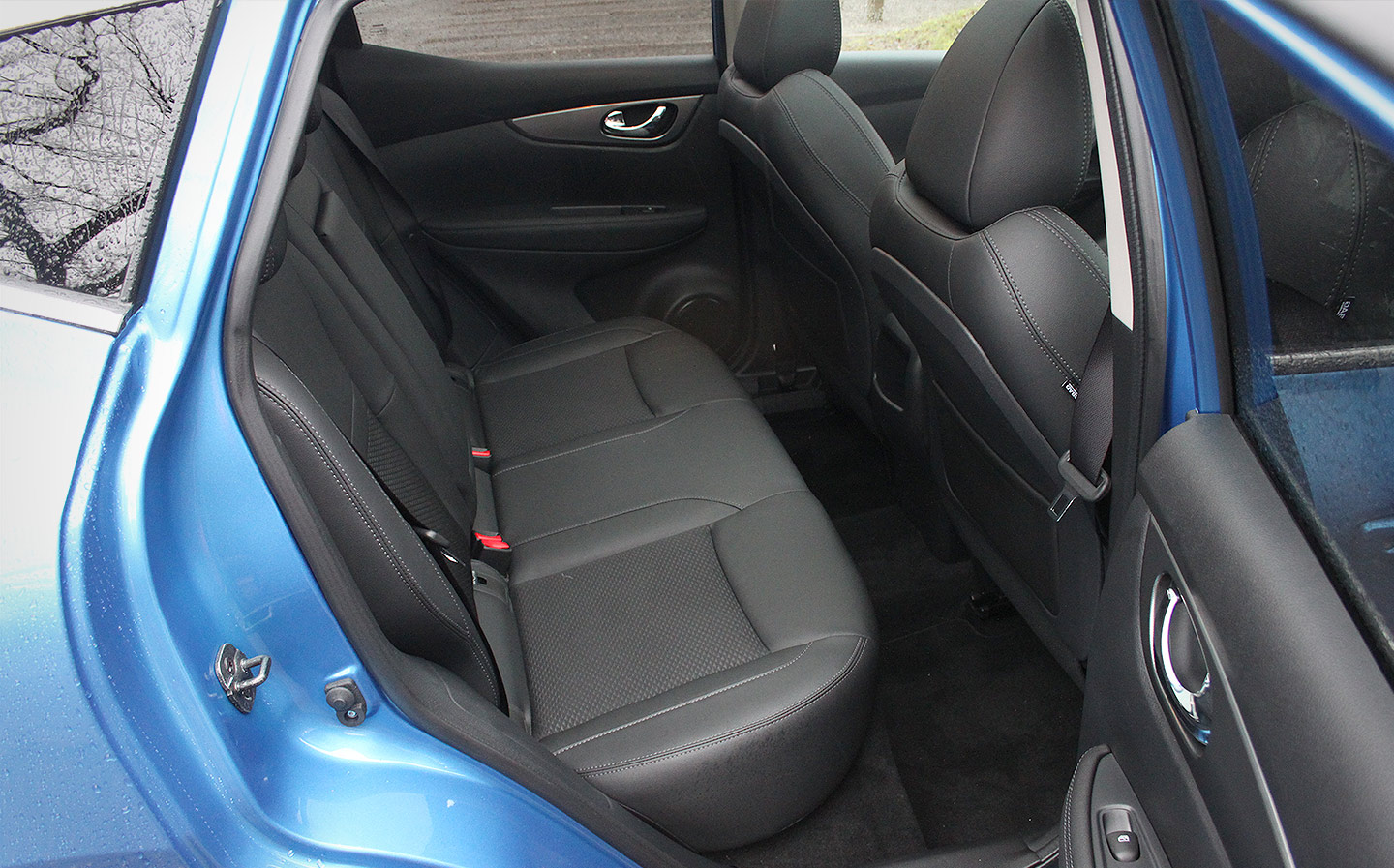
Out on the road, the Qashqai proved a decent motorway cruiser, with low noise levels in the cabin bar a bit of wind whistle around the front pillars, but also a delight in town thanks to light steering and a not-too-firm low speed ride. Yes, it could do with some more feel through the wheel and the auto box was a little dithering, but this isn’t meant to be a sports car; it’s a comfortable family hauler.
What really stood out in our test was the impressively efficient engine. The 1.3-litre turbocharged petrol motor in our test car produces 158bhp (you can opt for a less powerful version of the same motor, too), and while it didn’t have quite the low-down shove of the Hyundai’s 1.6-litre engine, it’s got enough grunt over 2,000rpm and is good to tow 1,500kg.
And the Nissan wiped the floor with the Hyundai on fuel economy. Over a mix of A-road, motorway and stop/start town driving, I averaged 38mpg – not too far off the car’s official 40mpg under the new, tougher WLTP test. Will could only get a piddling 30mpg out of the Hyundai.
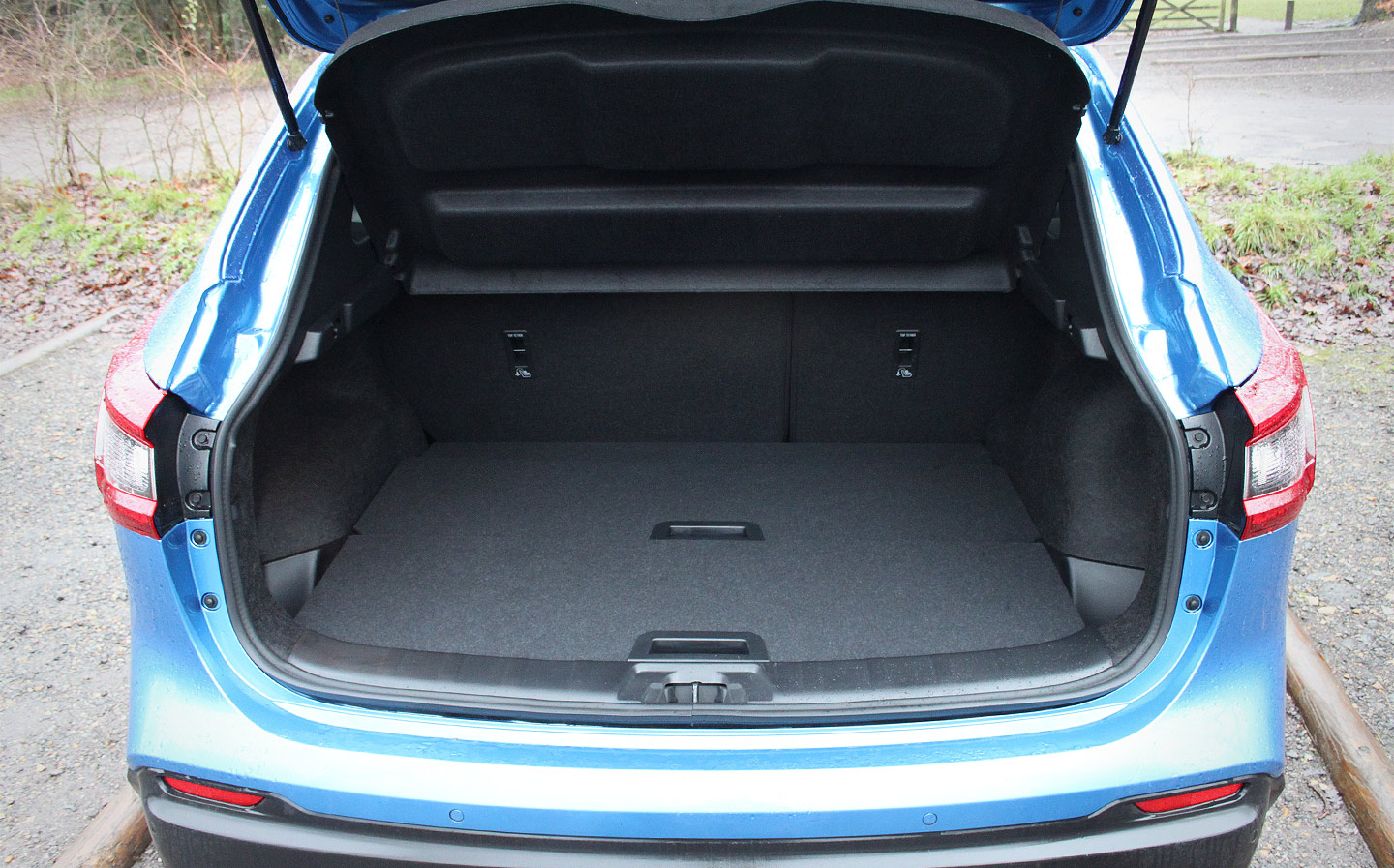
What’s more, the 158bhp petrol engine has an impressively low tax bill: with CO2 emissions of 131g/km under the old NEDC cycle (which, confusingly, will still be used to determine UK car tax rates until WLTP replaces it in April 2020), the Nissan specified as you see here will set you back £205 in the first year. In comparison, Will’s 175bhp petrol-powered Hyundai Tucson will cost you a whopping £830 in year one.
So, while Qashqai might not dazzle in the way that some of the newer crossovers do, Nissan is still building one of the most complete and compelling crossover packages. There’s nothing fancy about the Qashqai’s tried-and-tested formula; it’s simply good, like a trusty hoody in a world of floral shirts, or comfort food in a world of haute cuisine. And who wouldn’t eat fish and chips every day, if they could?
Tweet to @J_S_Allen Follow @J_S_Allen
2019 Hyundai Tucson
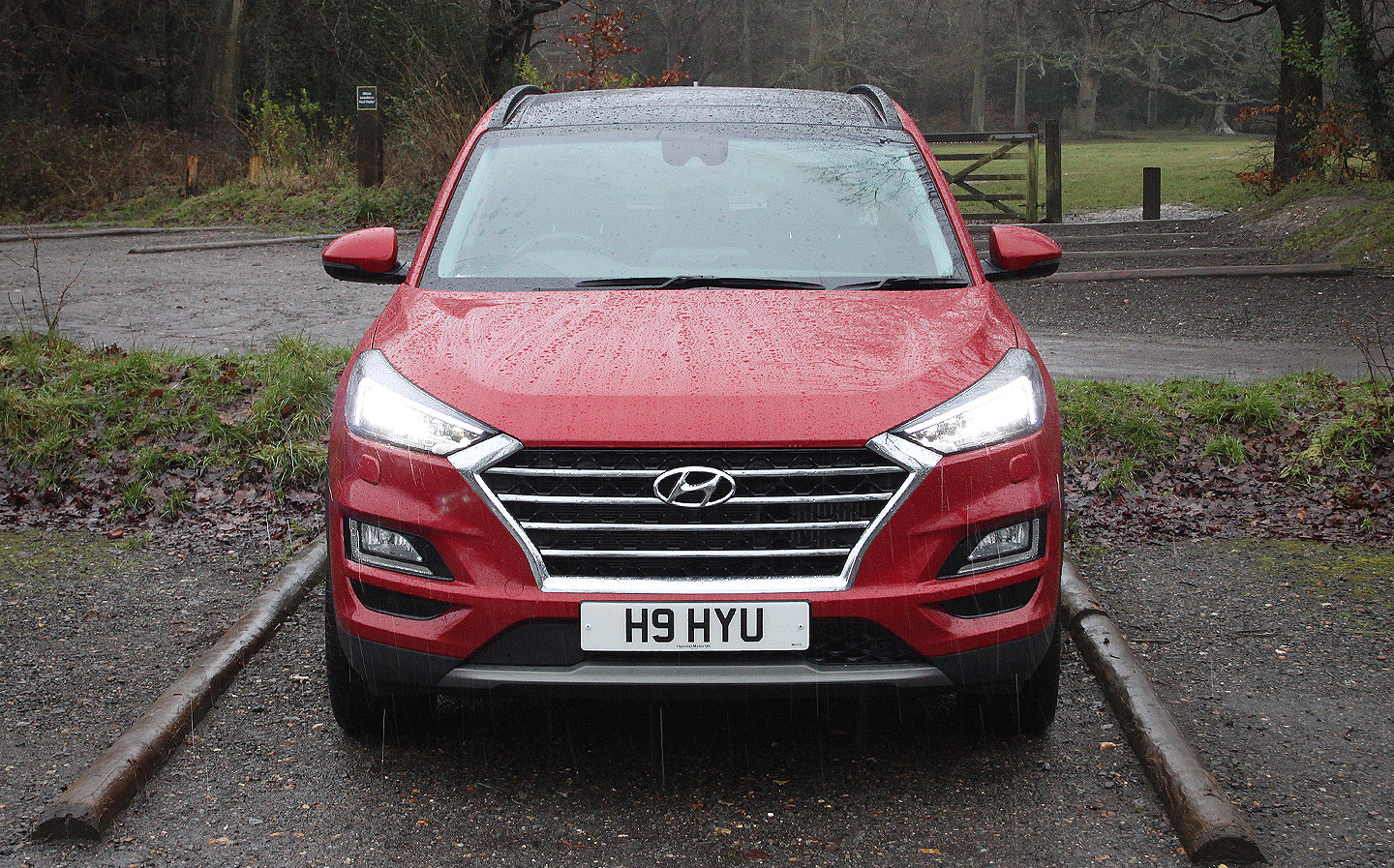
Words: Will Dron
Move over grandad. The ageing Qashqai is the crossover equivalent of vanilla – popular, yes, but exciting, no. The Tucson, by comparison, is a double caramel Magnum.
Okay, Hyundai might not be the sexiest brand you can think of but its latest models have much more wow factor than in years past, and the new Tucson, which went on sale last July, stopped us in our tracks when it was delivered. SUVs mostly look the same, let’s be honest, but with its gigantic grille, sharp creases along the doors and distinctive 19in alloys (standard on this flagship “Premium SE” version), the Tucson is one of the better-looking models on sale. The “Fiery Red” paintwork was rather eye-catching compared with the cool blue Nissan, too.
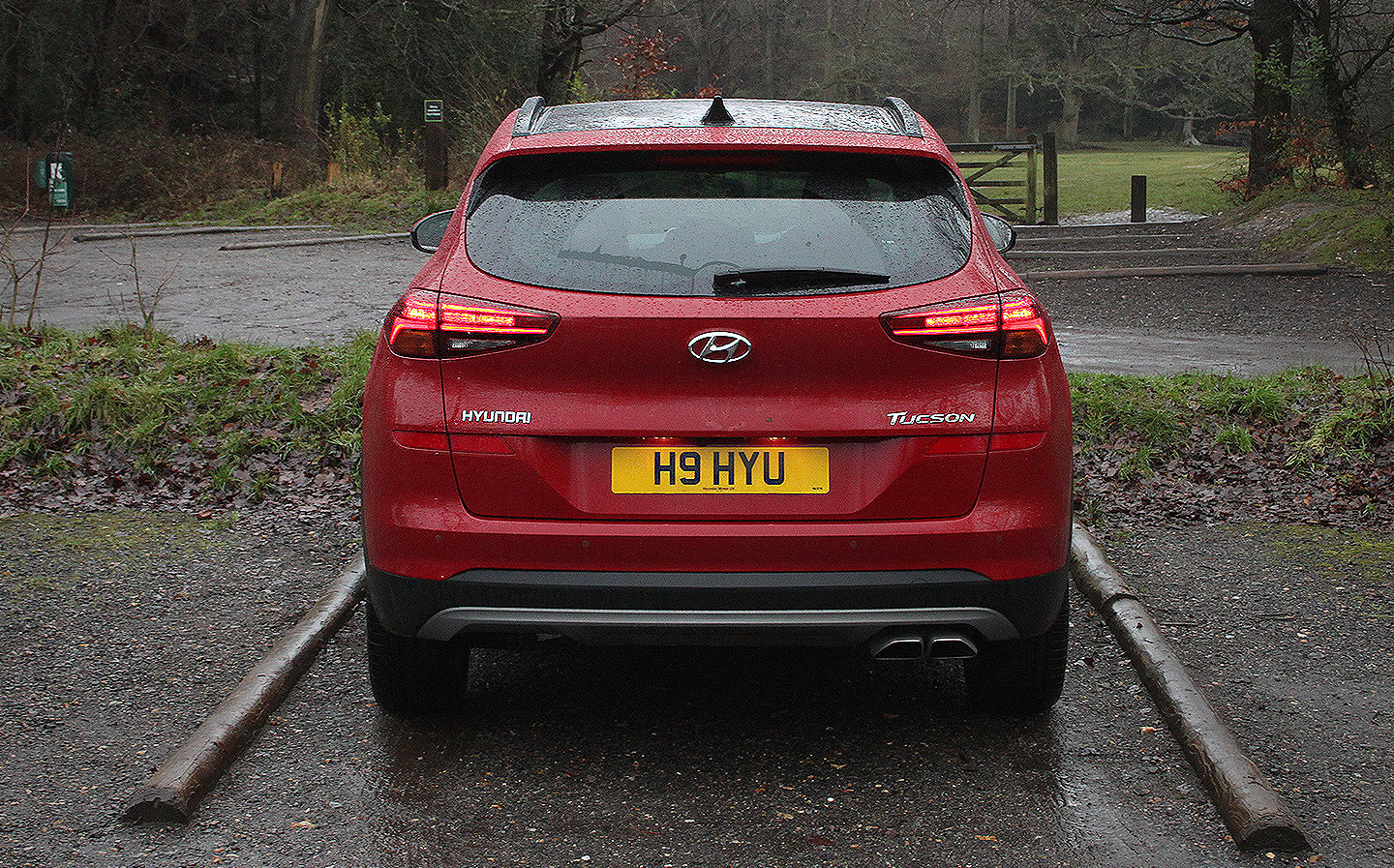
The Tucson’s rear end is less distinctive, I’ll admit – the Qashqai has a more modern-looking rear light cluster – but it’s far from unattractive.
And inside, quality abounds. Its dashboard isn’t going to impress Mercedes or Audi drivers, and you couldn’t call its layout or colour scheme bold, but there is solidity to the build and a good mix of materials, including a stitched faux leather insert running the width of the dash below the 8in touchscreen, and chrome air vent surrounds.
Speaking of the touchscreen (available on SE Nav models and above), it’s the tech that really impresses on the Tucson. The screen is bright and clear, and positioned handily high up, near the driver’s line of sight. Importantly, it runs Android Auto or Apple Carplay, depending on your smartphone allegiances.
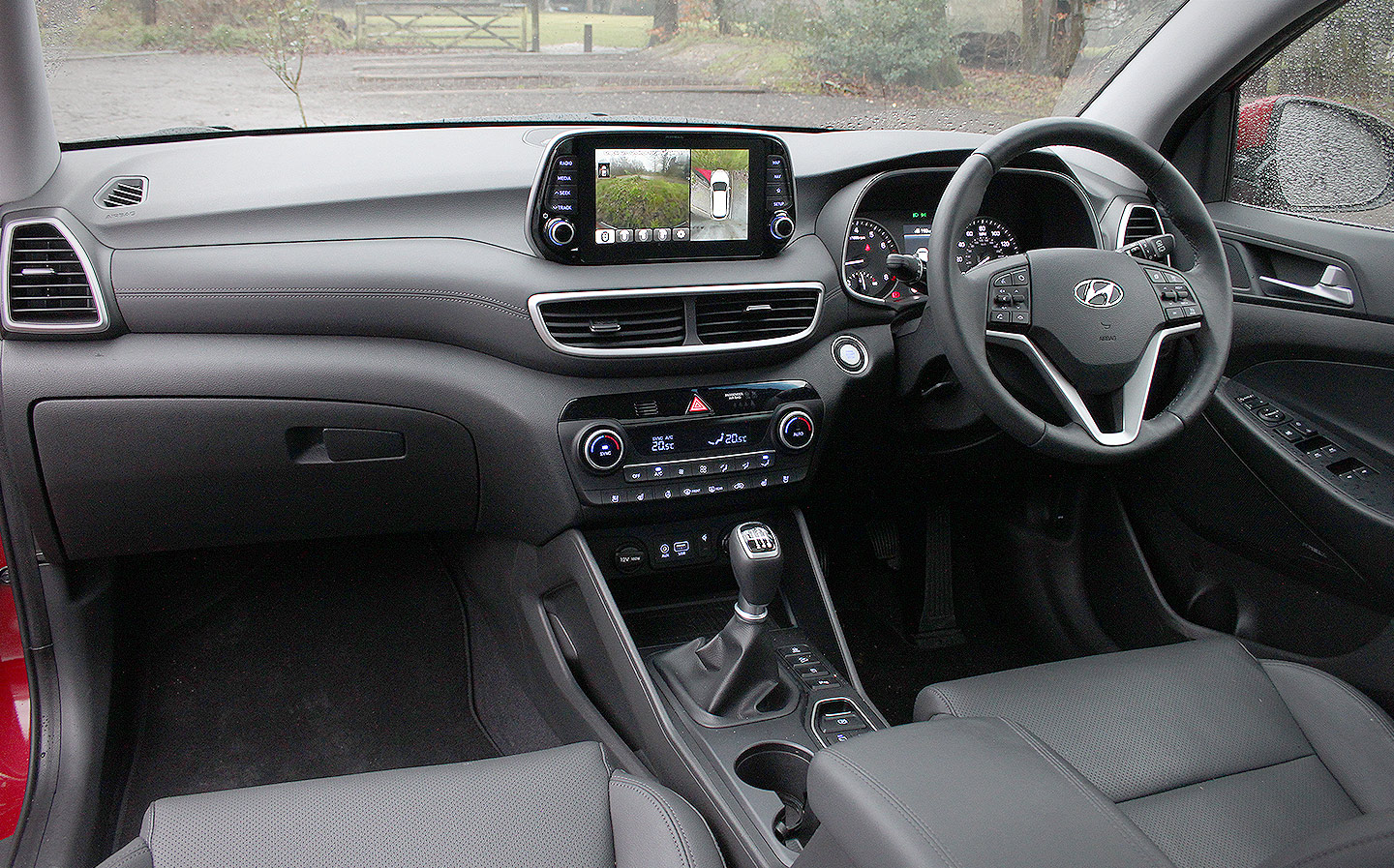
We were also amazed to find not only that four of the five seats are heated in Premium SE Tucsons (the rear seats even have two levels of heat) but that both front seats have a cooling mode, too.
Ventilated seats are something that not so long ago could only be found in Bentleys, Rolls-Royces and top Mercedes, and seemed rather extravagant even in those luxury cars. Now you can refrigerate your bottom in a Hyundai crossover, and on a hot day it’s an absolute blessing. Even the glovebox is chilled, for goodness sake.
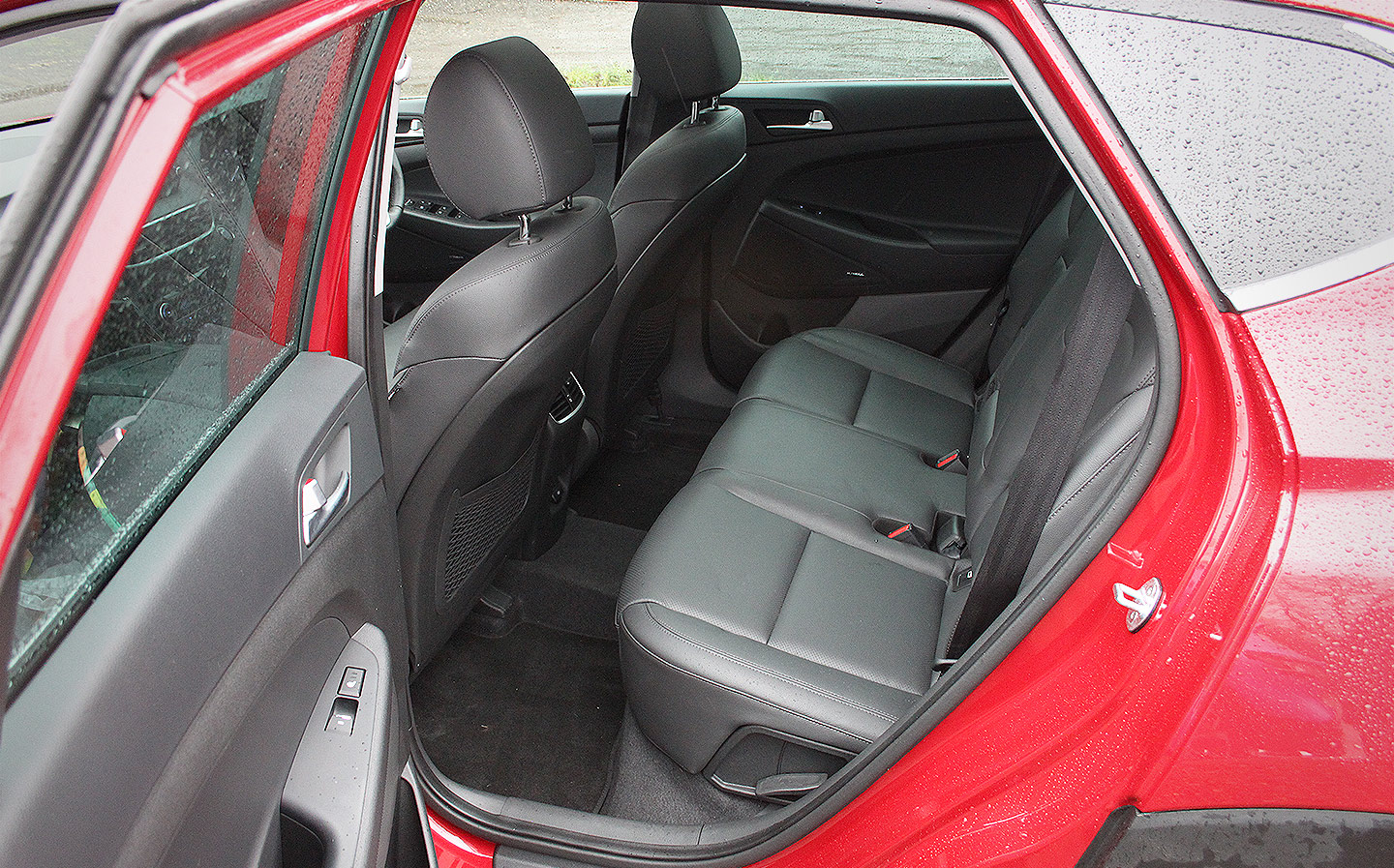
At this time of year, a heated steering wheel is most welcome, and our test car had that, too. If you’ve never experienced one before, trust me when I say they can make dark early morning commutes vaguely acceptable.
And the spec list continues: electrically-adjusted front seats; auto-dimming rear view mirror; automatic headlight dipping; rain-sensing wipers; panoramic (and opening) sunroof; adaptive cruise control with lane-keeping; surround view parking cameras; wireless phone charging; blind-spot warning; auto emergency braking; a 12v socket in the (capacious, 513-litre) boot.
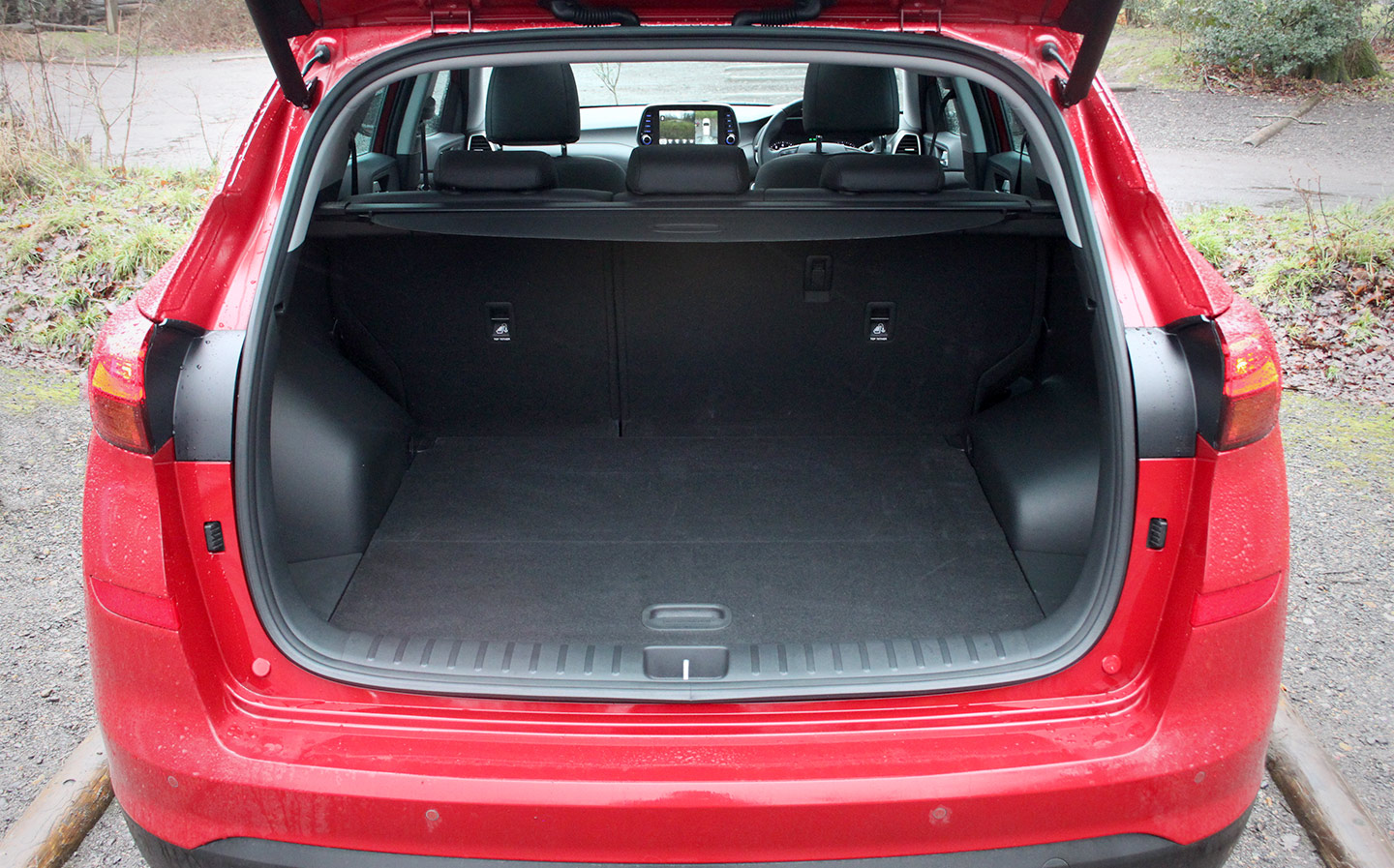
But it was the little things that really got our attention. The leather-effect knee bolster under the steering wheel, for example, or the digital compass display in the corner of the rear-view mirror.
There were also air vents and a 12v socket for the rear passengers, which is handy for charging iPads or running headrest DVD players – even the top specification Tekna+ Qashqai doesn’t have these conveniences.
And we also noticed that the rear ISOFIX point covers in the Tucson are hinged and spring-loaded, rather than designed to be removed and stored god-knows-where (then lost).
On the downside, James is right to point out that the Hyundai’s 175bhp petrol engine proved less fuel efficient than the Nissan’s 158bhp equivalent – the Tucson we tested is rated at 34.9mpg in the new WLTP test but I averaged just over 30mpg; James managed 38.1mpg. What’s more, the Tucson’s CO2 emissions of 173g/km mean a costly first year tax bill (see above).
But then again, my Tucson was fitted with a six-speed manual gearbox, while the Qashqai had an auto ‘box, so it’s not exactly a fair comparison (automatics are often more fuel-efficient than manuals these days). Get this Tucson with the DCT auto transmission and CO2 drops to 160g/km, which is £515 for the first year in tax. Thereafter, both cars cost the same, under the current rule: £140 per year.
The engine was also noticeably stronger than the Qashqai’s, with power coming in earlier in the rev range, while the steering felt sportier and the ride more composed – the Continental tyres seemed to be slightly thicker in profile than the Qashqai’s Michelins. I’d still recommend asking for 18in wheels on either car, as larger alloys mean lower profile tyres, resulting in a harsher ride.
Of course, we need look at pricing, too. The Hyundai Tucson Premium SE with this engine starts at £29,945 on-the-road, but with the options fitted our test car will set you back £30,410. The automatic version costs an extra £1,600, but you get slightly improved fuel economy (35.8mpg on the WLTP cycle) and the £315 first year tax saving, as pointed out above.
Meanwhile, a Nissan Qashqai in Tekna trim starts at £26,895 (Tekna+ starts at £28,095) but James’s test car, with auto transmission and the options fitted, is priced at £30,640.
All things considered, I know which one I’d choose.
Head to head
Nissan Qashqai vs Hyundai Tucson
| Nissan Qashqai Tekna+ 1.3 DIG-T 160PS 2WD DCT | Hyundai Tucson Premium SE 1.6 T-GDi 177PS 2WD DCT | |
| Price | £30,645 | £31,245 |
| Power | 158bhp | 175bhp |
| Torque | 199lb-ft | 195lb-ft |
| Acceleration (0-62mph) | 9.9sec | 8.9sec |
| Top speed | 123mph | 125mph |
| Fuel economy (WLTP) | 40.1/40.7mpg (min/max) | 35.8mpg (combined) |
| CO2 emissions (NEDC) | 131g/km | 160g/km |
| First-year tax rate | £205 | £515 |
| Towing capacity (braked/ unbraked) | 1,500kg/ 695kg | 1,600kg/ 750kg |
| Boot space (rear seats up/ down) | 401 litres/ 1,569 litres | 513 litres/ 1,503 litres |


